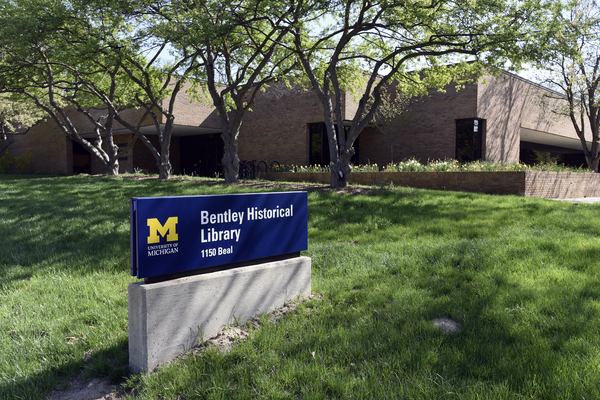The records of the Office of Vice President for Government Relations reflect the core functions of the office (local, state, and federal government relations and planning) and the various incarnations of the office, including the duties of Secretary of the University variously performed by the office. Documentation is primarily from the Ann Arbor campus office, but also includes files on the federal relations office operated by the university in Washington, D.C. Files received directly from the state relations office in Lansing are not included here. Materials detail the budget and appropriations process, interaction with community, state and federal legislators, and lobbying and monitoring efforts in Washington, D.C. on issues such as research funding, student loans, and support for higher education. Executive records pertaining to capital outlay and campus development, town and gown relations, and a 2020 presidential debate which was scheduled but never happened due to the COVID-19 pandemic.
The Office of the Vice President for Government Relations at the University of Michigan serves as the university's bridge between local, state, and federal governments.
The Board of Regents in their January 1968 meeting approved the creation of the new position of Vice President for State Relations and Planning. This office was created as a response to the increasing costs of, as well as increasing demand for, higher education, in addition to keener competition for funds. The office was to serve as the focal point for the development of academic programs and capital plans within the university, and as an instrument for articulating these plans to the government of the state of Michigan. In addition, this office was to serve as the chief consultant to the President and all other vice presidents of the university on questions related to state government planning and relations. Previously, all of these functions had been carried out by a number of different units within the university.
Arthur M. Ross, former Commissioner of Labor Statistics for the United States Department of Labor, was appointed Vice President for State Relations and Planning effective July 1, 1968. Ross passed away suddenly in June 1970, and Fedele F. Fauri, Dean of the School of Social Work, was appointed as his successor. Fauri served in this position until his retirement in September 1974, whereupon the office was reorganized under the leadership of Richard L. Kennedy, Secretary of the University. Kennedy held the dual title Vice President for State Relations and Secretary of the University.
At the November 1984 Board of Regents meeting, the office's name was changed from Office of State Relations to the Office of Government Relations (the bylaws were formally amended in September 1985). Following Kennedy's retirement in 1994, the office was once again reorganized. The Secretary of the University functions handled by Kennedy were created as a separate office (Harold Johnson served as interim secretary prior to the appointment of Roberta Palmer). Walter Harrison, who had been appointed Vice President for University Relations, was given oversight of a unit that included associate vice presidents for government relations (community, state, and federal), Marketing and Communications, News and Information Services, and radio station WUOM.
In January 1998 the Regents approved a recommendation to return functions of the Secretary of the University to the Vice President for University Relations. Shortly thereafter, in May 1998, Harrison accepted the presidency of the University of Hartford. After Harrison's departure, at the recommendation of President Bollinger, University Relations was divided into three vice presidential posts: Vice President for Government Relations, Vice President and Secretary, and Vice President for Media Relations. The last position eventually became Vice President for Communications and was staffed by Lisa Rudgers in April 2000.
Cynthia Wilbanks became Vice President for Government Relations in 1998. In 2002, she served as interim Vice President for Development. Wilbanks main contribution was to help create the University Research Corridor. This is a research partnership between the University of Michigan, Michigan State University, and Wayne State University whose Life and Health Sciences branch helped develop public health initiatives around opioid abatement. She retired in 2020.
The University of Michigan's Government Relations office in Washington, D.C. was opened in 1990. It was created to establish a direct presence in the capitol in order to lobby and report back pending legislation that would affect routine university operations.
Vice President for Government Relations
| Date |
Event |
| 1993 - 1998 | Walter Harrison |
| 1998 - 2020 | Cynthia Wilbanks |
| 2020 - | Chris Kolb |
